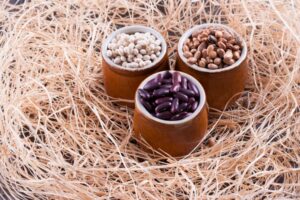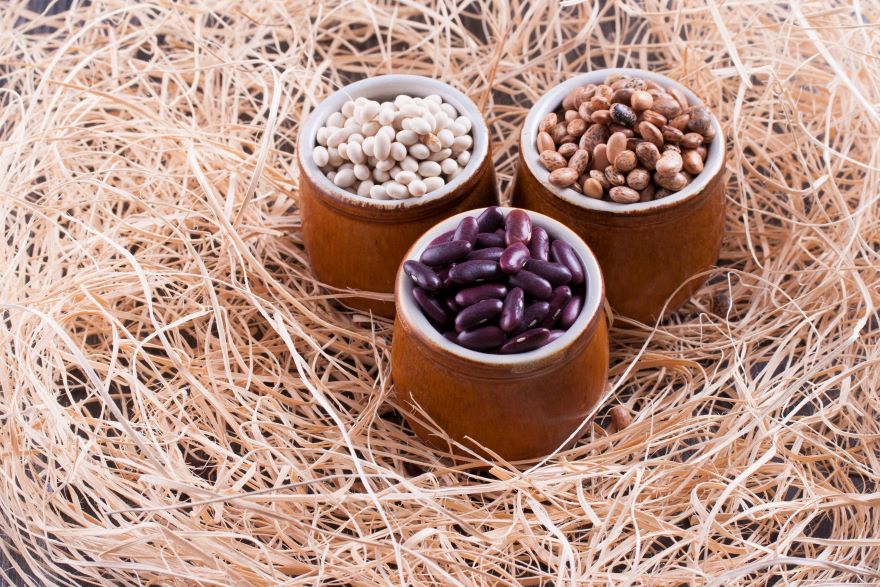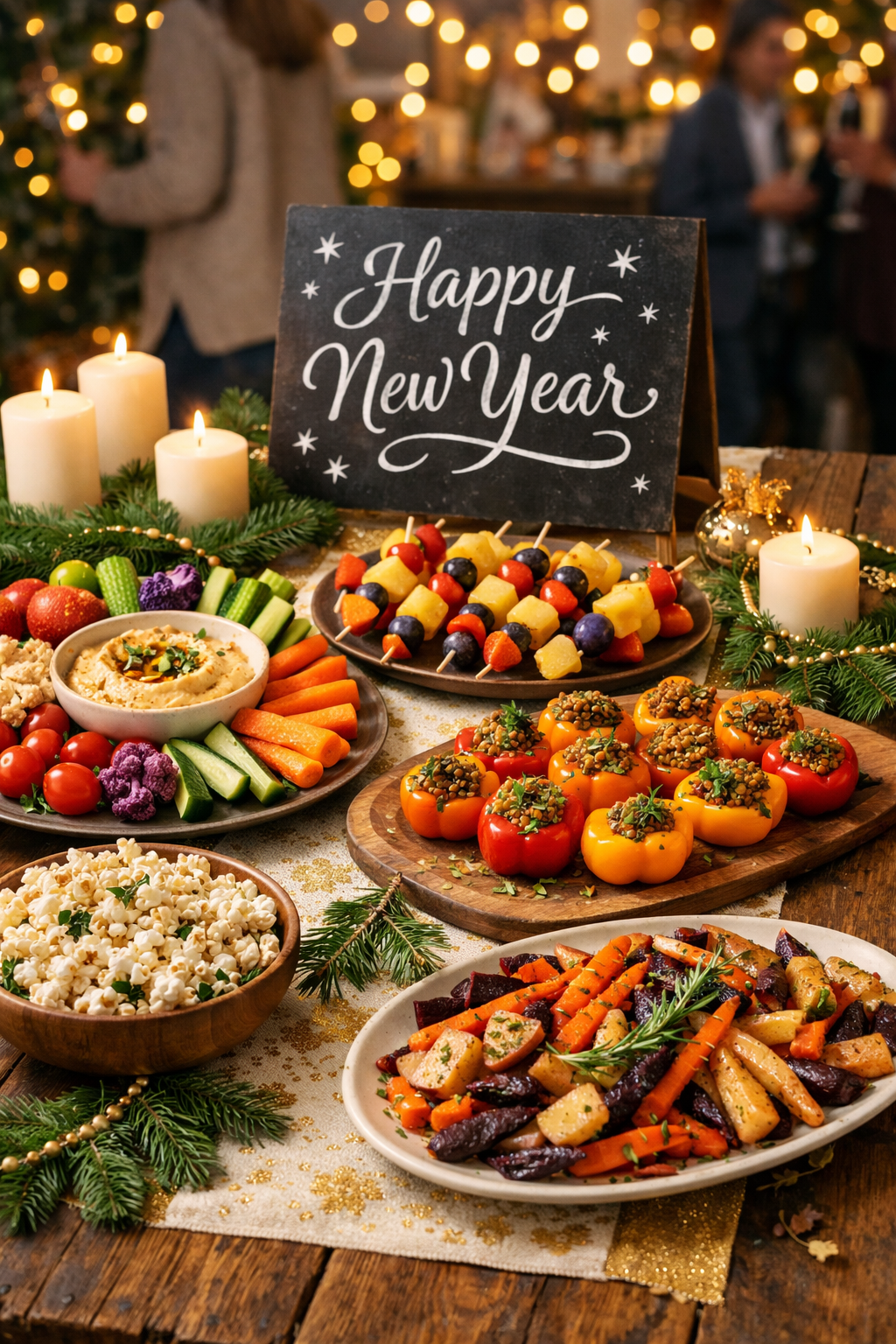Have you ever stood in the grocery aisle, staring at the white bean section and wondering about great northern beans vs navy beans? I’ve definitely been there. They look almost identical in the bag—seriously, if no one labeled them, I’d have no clue which was which. But once you get them home and actually start cooking with them, the differences become crystal clear.
Great northern beans are a little larger and have this creamy thing going on. They’re awesome in soups or anything that simmers for a while. They stay together, don’t turn to mush, and kind of melt into the broth in the best way. Navy beans? Totally different vibe. They’re smaller and have a bit more bite, and whenever I toss them into baked beans or a pot of chili, they just drink up all the flavor. Like little sponges of deliciousness.

And while both taste pretty mild, great northerns lean a bit nutty, whereas navy beans feel meatier—if that makes sense for a bean. I usually pick based on what I’m cooking. Lighter soup? Great northern. Hearty dish where the beans are the main event? Navy all the way.
When you’re standing there, staring at those beans and feeling stuck, just think—if you’re making soup, grab the bigger, creamier ones. But if it’s something hearty with a punch of flavor, the smaller, firmer beans are the way to go. Makes the choice way easier.
Physical Characteristics and Identification
I’ve actually had both kinds sitting in my pantry before, and when I finally compared them side by side, I was kind of surprised. Navy beans are really small—like, surprisingly small. They’re oval, kind of neat-looking, and even after a long simmer, they mostly hold their shape. I usually toss them into baked beans or anything that needs to be cooked low and slow.
Great northern beans are bigger. Some of them look almost double the size, honestly. They’ve got this little curve to them—sort of like a bent bean—and they cook up softer. Not mushy, but they puff a bit and come out lighter, more delicate. They don’t have that firm bite navy beans do.
And as for color, both are pale, but navy beans are usually more of a bright white. Great northerns lean slightly off-white, almost like the difference between white paint and eggshell. Once they’re cooked, though, you probably wouldn’t notice unless you were really looking.
This is kind of odd, but if you rub them between your fingers before cooking, you can feel the difference too. Navy beans are smooth, almost slippery. Great northern beans? They’re a bit rougher, with a slightly uneven surface. It’s not obvious until you’re paying attention, but once you feel it, it sticks with you.
What’s Actually Inside? A Look at Great Northern Beans vs Navy Beans
I’m not a nutritionist, but I’ve definitely spent way too much time reading labels and comparing beans. Both honestly are excellent for you, but they each have their own little nutritional superpowers.
The Protein Situation
Here’s something that surprised me: navy beans actually edge out great northerns slightly in terms of protein content. We’re talking about 15 grams versus 14.5 grams per cup when they’re cooked. Half a gram isn’t groundbreaking, but if you’re someone who relies on beans as a major protein source, those little differences can add up over time.
The cool thing is that both beans provide a solid source of protein when paired with rice or bread. They really work together nutritionally to give your body what it needs.
Fiber—Where Great Northerns Really Shine
This is where great northern beans totally win. They’ve got about 20 grams of fiber per 100 grams, while navy beans have around 15. That’s actually a pretty big difference—we’re talking about a third more fiber.
I noticed this when I started eating more great northerns in my soup rotation. I felt full for longer, and let’s just say my digestive system was more content. Plus, all that fiber is supposed to help with cholesterol and blood sugar, which is never a bad thing.
The Vitamin and Mineral Breakdown

This is where it gets interesting because each bean kind of has its own specialty areas.
Navy beans are like the multivitamin of the bean world. They’re packed with:
- Choline – your brain’s best friend for memory and focus
- Zinc – the immune system’s secret weapon
- B vitamins like thiamine and folate – energy production and cell repair heroes
- Iron – keeping your blood oxygen levels on point
Great northern beans, on the other hand, are mineral powerhouses:
- Potassium (1,387mg per 100g—that’s actually impressive) – your heart and blood pressure will thank you
- Magnesium – keeps your bones strong and muscles happy
- Calcium – building blocks for more than just your teeth
- Phosphorus – the energy storage specialist in your cells
The Calorie Factor
If you’re counting calories, great northerns are slightly lighter at about 127 calories per 100 grams cooked, compared to navy beans at 140. It’s not a huge difference, but it’s there if it matters to you.
When it comes to great northern beans vs navy beans, both offer exceptional nutritional value, making either one a smart choice for your health. The better option really depends on your recipe and whether you’re looking for a bit more protein from navy beans or the higher fiber content in great northerns.

Cooking Characteristics and Timing
The cooking behaviors of these beans directly influence recipe selection and preparation methods. Understanding these differences prevents common cooking mistakes and ensures optimal texture in finished dishes.
Preparation and Soaking Requirements
Both varieties benefit from overnight soaking, which reduces cooking time and promotes even heat penetration. Navy beans, due to their denser structure, may require 8-12 hours of soaking, while great northern beans achieve adequate hydration in 6-10 hours. The quick-soak method—bringing beans to a boil for two minutes, then allowing them to stand for one hour—works effectively for both varieties when time constraints prevent overnight soaking.
Cooking Times and Methods
Navy beans typically require 60-90 minutes of simmering after proper soaking. Their dense composition maintains structural integrity throughout extended cooking periods, making them suitable for slow-cooking methods and long-braised dishes.
Great northern beans demand 90-120 minutes of cooking time to achieve optimal tenderness. The extended cooking period allows these beans to develop their characteristic creamy, almost buttery texture. Their larger size facilitates deeper flavor absorption, making them excellent candidates for heavily seasoned dishes and aromatic broths.
If you’re investing time into cooking dried beans from scratch, the right pot makes all the difference. A high-quality Dutch oven holds heat evenly, prevents scorching, and lets those flavors develop beautifully over low and slow cooking.

Le Creuset Enameled Cast Iron Signature Round Dutch Oven, 7.25 qt., Cerise
- Enameled cast iron delivers superior heat distribution and retention
- Ready to use, requires no seasoning
- Easy-to-clean and durable enamel resists dulling, staining, chipping and cracking
- Light colored smooth interior enamel allows easy monitoring of cooking progress
Texture Development During Cooking
The textural evolution during cooking represents perhaps the most critical difference between these varieties. Navy beans retain their firm bite and distinct shape throughout the cooking process. This characteristic makes them ideal for applications where individual bean identity remains important.
Great northern beans undergo more dramatic textural changes during cooking. Their softer composition allows for partial breakdown, creating a naturally creamy consistency that can thicken cooking liquids without additional ingredients. This tendency toward creaminess makes them particularly valuable in purees and smooth preparations.
Optimal Culinary Applications
Professional recipe development considers bean characteristics when specifying ingredients. Understanding these applications helps home cooks achieve restaurant-quality results in their own kitchens.
Navy Bean Applications
Navy beans excel in preparations requiring structural integrity and visual appeal. Their ability to maintain shape makes them ideal for:
- Cold salads and grain bowls where texture contrast is desired
- Baked bean preparations that undergo extended cooking periods
- Chunky soups and stews where individual bean identification enhances the eating experience
- Casseroles and mixed dishes where beans serve as discrete flavor and texture components
The neutral flavor profile of navy beans allows accompanying ingredients to dominate the taste profile while providing protein, fiber, and textural interest.
Great Northern Bean Applications
Great northern beans shine in applications that benefit from their creamy texture and flavor-absorbing capabilities:
- Smooth soups and bisques that require natural thickening
- Bean purees and dips where creamy consistency is paramount
- Braised dishes where beans partially break down to create rich, satisfying textures
- Vegetarian protein preparations that benefit from substantial, satisfying mouthfeel
Their larger size and softer texture make great northern beans particularly suitable for dishes where beans serve as the primary ingredient rather than a supporting component.
Professional Recipe Applications
Each of these beans brings something unique to the table. Navy beans, with their firm texture and ability to absorb deep flavors, are a favorite for baked dishes and hearty stews. Great northern beans, on the other hand, have a softer texture that makes them ideal for soups, purees, and recipes where a creamy consistency is key. The following recipes showcase how both varieties can shine in the kitchen.
Classic Navy Bean Preparation: Traditional Boston Baked Beans
Ingredients:
- 2 cups dried navy beans, soaked overnight
- 6 cups filtered water
- 3 tablespoons extra-virgin olive oil
- 1 large yellow onion, finely diced
- 1/3 cup blackstrap molasses
- 2 tablespoons apple cider vinegar
- 2 teaspoons dry mustard powder
- 1 teaspoon smoked paprika
- 1 teaspoon kosher salt
- 1/2 teaspoon freshly ground black pepper

Method:
- Drain soaked beans and transfer to a large, heavy-bottomed pot with 6 cups fresh water
- Bring to a rolling boil, reduce heat to maintain a gentle simmer, and cook for 45 minutes until beans are tender but maintain their shape
- Preheat oven to 300°F and position rack in lower third
- In a large, oven-safe Dutch oven, heat olive oil over medium heat
- Add diced onions and cook until translucent and lightly caramelized, about 8-10 minutes
- Combine molasses, vinegar, mustard powder, smoked paprika, salt, and pepper in a small bowl
- Add drained beans and molasses mixture to the Dutch oven, stirring gently to combine
- Add enough reserved cooking liquid to barely cover beans
- Cover tightly and bake for 2.5-3 hours, checking every 30 minutes and adding liquid as needed
- Remove lid during final 30 minutes to develop caramelized surface
For soups and purees, a high-quality blender is essential, and the Vitamix 5200 is a game-changer. Its powerful motor will blend even the toughest ingredients, creating velvety smooth soups, dips, and smoothies in minutes. With its easy-to-use controls and durable design, it’s perfect for any home cook who wants to create restaurant-quality meals. If you’re whipping up a batch of rustic white bean and herb soup, the Vitamix will take your smoothness game to the next level!

Vitamix 5200 Blender, Professional-Grade, 64-ounce Container, Self-Cleaning, Black
- Variable Speed Control: Easily adjust speed to achieve a variety of textures. The dial can be rotated at any point during the blend, so you’re in complete control
- Large Batches: The size and shape of the self-cleaning 64-ounce container is ideal for blending medium to large batches
- Hot Soup: The blades in the Vitamix container reach speeds fast enough to create friction heat, bringing cold ingredients to steaming hot in about six minutes
- Hardened Stainless-Steel Blades: Our aircraft-grade stainless steel blades are designed to handle the toughest ingredients, so from the first blend to the last, you get the same quality results
Signature Great Northern Bean Preparation: Rustic White Bean and Herb Soup
Ingredients:
- 2 cups dried great northern beans, soaked overnight
- 8 cups high-quality vegetable stock
- 3 tablespoons extra-virgin olive oil
- 1 large sweet onion, diced
- 3 medium carrots, diced
- 3 celery stalks, diced
- 4 garlic cloves, minced
- 2 bay leaves
- 2 tablespoons fresh thyme leaves
- 1/4 cup fresh Italian parsley, chopped
- Kosher salt and white pepper to taste
- High-quality olive oil for finishing

Method:
- Drain and rinse soaked beans thoroughly
- Heat olive oil in a large, heavy-bottomed pot over medium heat
- Add onion, carrots, and celery, cooking until vegetables are softened and lightly caramelized
- Add minced garlic and cook for 60 seconds until fragrant
- Add beans, vegetable stock, bay leaves, and thyme
- Bring to a boil, reduce heat to maintain gentle simmer, and cook covered for 1.5-2 hours until beans are very tender
- Remove bay leaves and discard
- Using an immersion blender, partially puree soup, leaving some whole beans for textural interest
- Season carefully with salt and white pepper
- Stir in fresh parsley just before serving
- Finish each serving with a drizzle of high-quality olive oil
Health Benefits and Nutritional Considerations
Both bean varieties contribute significantly to overall health and wellness when incorporated into regular meal planning. The high fiber content supports digestive health by promoting beneficial gut bacteria and maintaining regular elimination patterns. Many individuals report improved energy levels and enhanced appetite control when beans become regular components of their dietary routine.
The substantial protein content makes both varieties excellent alternatives to animal proteins, particularly valuable for vegetarians, vegans, and individuals seeking to reduce their environmental impact through plant-based eating. The complex carbohydrates provide sustained energy release without the rapid blood sugar fluctuations associated with refined grain products. The antioxidant compounds present in both varieties contribute to reduced inflammation and may help prevent chronic diseases. The potassium content, particularly abundant in great northern beans, supports cardiovascular health and helps maintain healthy blood pressure levels.

For those who want to make cooking healthy meals as efficient and enjoyable as possible, the All-Clad Stainless Steel Cookware Set is a must-have. It’s designed to withstand high temperatures and is built to last a lifetime, giving you the perfect tool for sautéing, simmering, and searing. If you’re cooking beans for soups or casseroles, this cookware set ensures even heat distribution for perfectly cooked meals every time.

All-Clad BD005707-R D5 Brushed 18/10 Stainless Steel 5-Ply Bonded Dishwasher Safe Cookware Set, 7-Piece, Silver
- Set includes: 10-inch fry pan, 1.5-quart sauce pans with lid, 3-quart saute pan with lid, and 8-quart stockpot with lid
- 5-ply bonded construction with alternating layers of stainless steel and aluminum for warp-free durability and supremely even heating that eliminates hotspots
- For an added touch of refinement, it features a beautiful and easy to maintain brushed finish and fitted, stainless-steel lids
- Compatible with all cooktops and optimized performance for induction tops – also oven and broiler-safe up to 600°F
Storage and Preparation Best Practices
Proper storage techniques ensure optimal quality and extend the useful life of dried beans. Store both varieties in airtight containers in cool, dry locations where they will maintain peak quality for up to three years. However, beans older than one year may require extended cooking times and may not achieve the same optimal texture as fresher specimens.
When working with canned versions, always rinse thoroughly to remove excess sodium and any metallic flavors that may have developed during processing. While canned beans offer convenience, dried varieties provide superior texture control and flavor development, justifying the additional preparation time for special occasions and important meals.
Making the Right Bean Call
Honestly, choosing between navy beans and great northerns just comes down to what you’re cooking that day. If I’m making something where the beans need to stay firm—like a bean salad or a slow-cooked stew—I usually go with navy beans. They hold together better. But if it’s a soup or something that could use a creamier feel, I reach for great northerns. They kind of melt into everything in a good way.
It’s worth keeping both in your pantry. They’re affordable, easy to store, and each works better in different types of meals. I’ve found that having options just makes cooking easier.
The best advice? Try them out. Cook a pot of each and notice how they react. Do they get mushy? Do they soak up flavor? Make notes if you want. That kind of trial-and-error is what really teaches you how to use them well.
At the end of the day, both beans can turn out healthy, filling, and satisfying dishes when you treat them right. It’s not just about choosing the “best” one—it’s about knowing what works for your recipe.
Want more ideas or want to chat with other home cooks? Join our Facebook community and connect with others who love good food and smart nutrition.

*We may earn a commission for purchases made using our links. Please see our disclosure to learn more.



